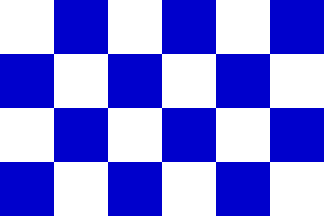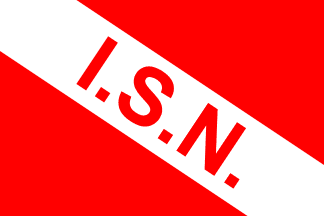
Last modified: 2005-08-26 by antonio martins
Keywords: beach |
Links: FOTW homepage |
search |
disclaimer and copyright |
write us |
mirrors
The portuguese system in beach security is a “traffic
light” system where the flags’ significance is as follows:
Jorge Candeias, 28 Jun 2005

You can bath and swim, provided you follow the security rules as
set and made public annually by the I.S.N. This flag is hoisted with fair
sea conditions.
Jorge Candeias, 28 Jun 2005

You can bath but you cannot swim. This flag is hoisted when there
are strong currents due to the danger of people being dragged away by the
sea.
Jorge Candeias, 28 Jun 2005

You cannot bath, i.e., you cannot enter the water. This flag is
hoisted when there are exceptionally strong currents, in the presence of
big waves, when sharks are detected in the area (in the archipelagos,
most of all — sharks are very rare in mainland Portugal), when
hydrocarbons are spilled or toxins are found in the water, when explosives
are detected in the sand or in nearby waters, during military exercises
with amphibious landings, when the maritime authorities so command,
and so on. From my experience, of all these cases, the most common
situation of red flag are big waves.
Jorge Candeias, 28 Jun 2005

The watchman is temporarily absent from the beach. Usually this flag
gets up on the mast during lunch hours. Regarding the precise arrangement
of squares Jan mentions, weather it's blue and white or white and blue
it’s pretty much irrelevant (i.e.: the flag cannot be hoisted upside
down) — what matters is the pattern.
Jorge Candeias, 28 Jun 2005,

It is red with a white descending diagonal (starting from the top hoist)
bearing the organization's initials, plus dots, also in red. More info in
this
page.
Jan Mertens, 27 Jun 2005</